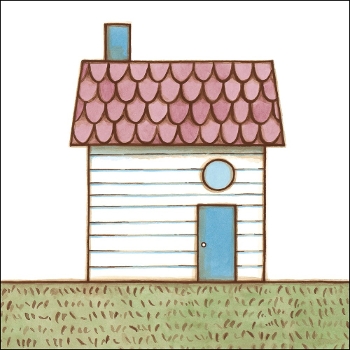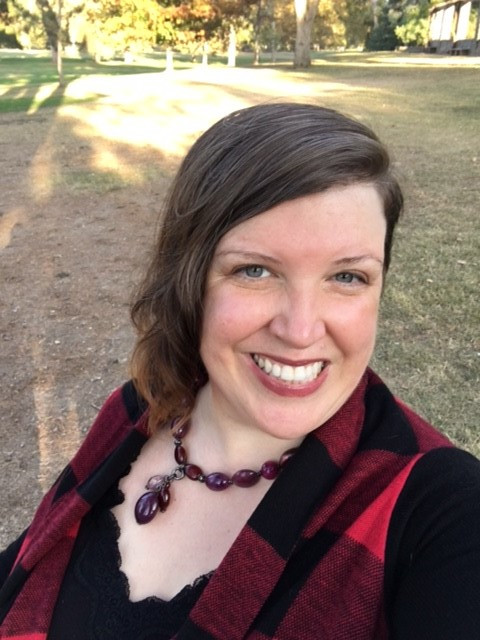Kevin Henkes's simple, gently paced, and audience-engaging A House is eligible for consideration by both Geisel and Caldecott committees — will it stand out among this year's field of contenders?
 Amanda Foulk is one of the bloggers at Guessing Geisel, a mock Geisel Award blog. She visits Calling Caldecott this year to discuss a book that could win either the Geisel Award or the Caldecott (or both!). -- J.D. and M.V.P.
Amanda Foulk is one of the bloggers at Guessing Geisel, a mock Geisel Award blog. She visits Calling Caldecott this year to discuss a book that could win either the Geisel Award or the Caldecott (or both!). -- J.D. and M.V.P.
Kevin Henkes, recipient of the 2020 Children’s Literature Legacy Award, has time and again proven his skill at creating books for young readers, including books distinguished enough to win Caldecott, Newbery, and Geisel medals and honors. Despite this legacy of success, the committees for this year’s Caldecott and Geisel will not be considering any of those award-winning titles from Henkes’s body of work, as the criteria requires that they look at each book compared only with the other books in that publication year.
A House is not a raucous book by any stretch; the wordless cover boldly shows the central figure of the tale, the house itself, portrayed in a limited watercolor palette. Defying adult expectations of illustrated house symmetry, Henkes’s house has one blue rectangle of a door, one round blue window, and a rectangular blue chimney. A tiled roof and white siding complete the picture, grounded firmly on a foreground of green texture, giving the impression of grass.
Peek under the jacket to spot that the book case features a different scene entirely, with the sun, moon, and stars on a field of pale blue, along with the simple toylike characters who will eventually make the house their home. A turn to the title page shows the text, "A House," above a single potted flower. The next spread is a close-up of the stucco roof with author, publisher, and CIP info letting us know that the illustrations were created with brown ink, watercolor paint, and colored pencils.
Once we’re past the title page and publishing information, the book follows a comfortingly predictable format: the image of the house, framed by a thick colorful margin, facing a page with the text centered. For the Caldecott committee, all that lovely white space may be considered — but not the text itself. They might notice how the watercolor framing on each page is matched front-to-back until the final page, where they might note the detail of how the cat peers from the round window to see three watercolor silhouettes of birds flying off the endpaper. They might appreciate the perspective that consistently features the front of the house with occasional zooming-in on various corners — birds perched on the roofline, growing puddles in the rain, snow piling up to obscure half of the rectangular door. The committee will notice the dog approaching in the very corner of a frame, previewing the introduction of the group approaching the house. The sequence of panels absolutely tells its own story, inviting young readers to notice these details.
The text presents the house in different situations, all with a consistent perspective — in the morning, in the rain, in the snow — and then introduces questions after each page-turn to prompt readers’ observations. Readers are invited to notice qualities about the house that match up with skills they may be already mastering, allowing them to engage with the illustrations by identifying the color of the door, the shape of the window, the number of the stars. On the final page it deviates from questions with objective answers, such as comparative sizes or numbers of stars, to a more open-ended invitation by asking about the dog, cat, and people: “What are they doing?” It replies to itself with: “They are coming home.” The closing text mimics the open, with one small change — the centered words on the page read “A home” instead of “A house.”
Henkes consistently excels with stories full of quiet, contemplative moments and simple illustrations, and this story could bring to mind his previous Geisel honor winner, Waiting, as could the cylindrical toy shape of the cat, dog, and people. However, even though the text has what the Geisel committee likes to see — plenty of repetition, simple sentences, and recognizable words — the style is so clearly prompting a dialogue that it would feel like a wasted opportunity to have a young reader simply read the words on the page rather than accepting the invitation and filling all that white space by voicing their own observations. A House has more to recommend it to the Caldecott committee, who can reflect on the choice of brown ink over black (giving a more timeless, nostalgic feel); the use of simple shapes to convey, remarkably, an entire story and imbue the house with emotion; and all the details folded in to the gentle pace of this tale.
Will A House stand out among this year’s field of contenders? What do you think?
[Read the Horn Book Magaizine review of A House.]

RELATED
ALREADY A SUBSCRIBER? LOG IN
We are currently offering this content for free. Sign up now to activate your personal profile, where you can save articles for future viewing.







Add Comment :-
Be the first reader to comment.
Comment Policy:
Comment should not be empty !!!